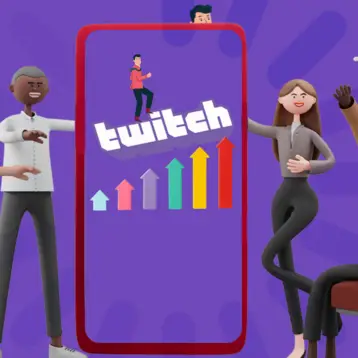
Technology is changing the world, from the way we communicate with each other, to how we share and process information, to how companies operate. The most successful organizations are those who embrace new technology readily to improve their operations and move ahead of their competitors. Digital transformation is a route more and more businesses are taking today. However, without a concrete communications strategy, the digital transformation process can take longer than projected or even fail to take ever take flight.
What is Digital Transformation?
Digital transformation is the integration of digital technologies into all aspects of a business. In today’s technological world, organizations are turning to technology more and more to solve traditional problems. Companies turn to digital transformation to modify existing (or create new), business processes, customer experiences, culture shifts, and to collect data insights. These shifts are often used to meet a changing industry or meet new business requirements.
Examples of Digital Transformation
Some famous examples of successful digital transformations include:
- As the publishing industry continues to struggle, the New York Times chose to embrace technology by offering a digital online subscription to their content. While many of their competitors have turned to digital ad revenues, the NYT allows for minimal advertising on their site, allowing them to control their content and voice.
- Disney has gone through a recent digital transformation with its launch of Disney+. Previously, Disney would license their content to video streaming providers such as Netflix or Hulu. Now, Disney has decided to take back control of all its content and enter the video-streaming sector themselves.
The Role of Communications in Digital Transformations
Depending on the size and structure of the company, a digital transformation can take years. While it only took The Home Depot two years to complete their transformation, it took Microsoft five years, Best Buy seven years, and Target eight. Regardless of the time commitment, all of these digital transformations were hugely successful, with stock price growth rates ranging from 59-258%.
Not all digital transformations are successful, and undoubtedly, a key factor in communications. As the IT department will likely lead the digital transformation, the CIO (or management equivalent) needs to ensure the roll-out plans and implementation processes are communicated well throughout all departments. An internal change of this size, which often impacts most if not all, of the business, needs an active internal communications plan in place to succeed. However, as the IT department is not typically associated with strong communication skills, this can be the downfall of a digital transformation process in many companies.
Without proper communication, a digital transformation can:
- Take longer than anticipated which results in higher costs
- Leave employees feeling frustrated and confused about the changes
- Cause a break between IT and other departments, which impacts corporate culture
- Never be appropriately adopted by employees
- Never “complete” due to a variety of internal problems despite substantial investments made
Don’t Rely On Emails: The Multi-Channel Approach
Chances are, there is a high percentage of employees within your organization that skip over emails from the IT department. No matter how much upper management emphasizes the importance of the new IT digital transformation project, some individuals simply don’t pay attention to.
Try to get around this barrier by implementing a multi-channel approach. Your employees communicate with each other in a variety of ways: the intranet, mobile apps, Slack, etc. Engage with your employees on the channel that they prefer, so they are more likely to digest the content of your IT department shares.
Increase Employee Engagement for the Digital Transformation
Employees from other departments are less likely to embrace new processes without any explanations. CIOs can significantly increase employee engagement by explaining why transformations are taking place. There’s always a compelling reason, and helping the employees understand the goal of the transformation can help them to feel involved.
Make Sure IT Communicates in Non-Technical Jargon
While communicating the plans and goals of a transformation to other departments may seem like a simple process, it’s really not. When an IT department communicates in technical jargon, they’re not getting their message across. This can result in other departments feeling confused, resentful, and frustrated with IT. These feelings can reduce cooperation from employees, slow down projects, and impact company culture.
According to Wavestone US, the key to breaking this cycle is to allow IT to integrate with all business units of the organization. Treat the IT department as a “customer service organization” that helps each department. Each department can have an IT representative that they can approach with questions, concerns, or ideas. This can close the communication gap and keep projects on track.
Create a Space for Authoritative Documentation
Lastly, a digital transformation is a complicated process that will affect each department within an organization differently. The IT department can help clarify any confusion by keeping a space for authoritative documentation. This can be a place where employees turn to for:
- The reasoning behind the digital transformation
- The goals of the digital transformation
- The expected timeline with constant updates on the progress
- Passwords, how-to resources, points of contact
Digital transformations are necessary to keep up in a competitive marketplace. However, without the IT department guiding the rest of the organization through the process, the project can significantly slow down or fail










